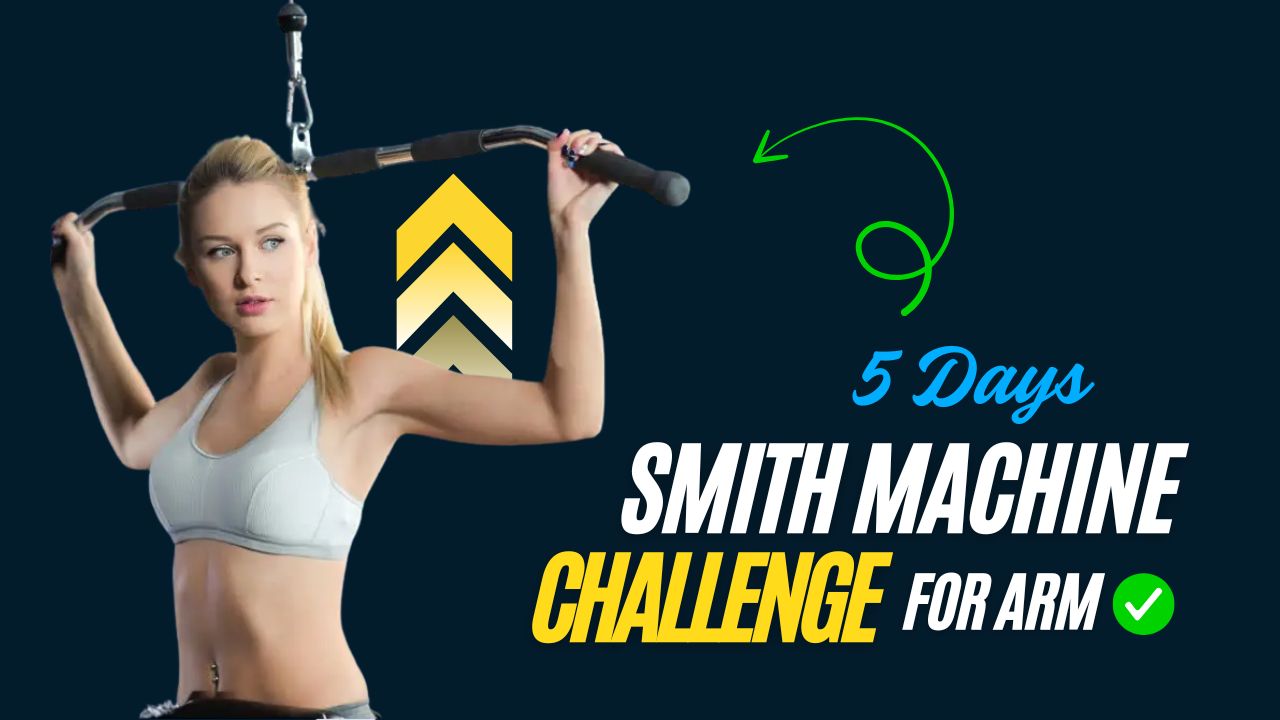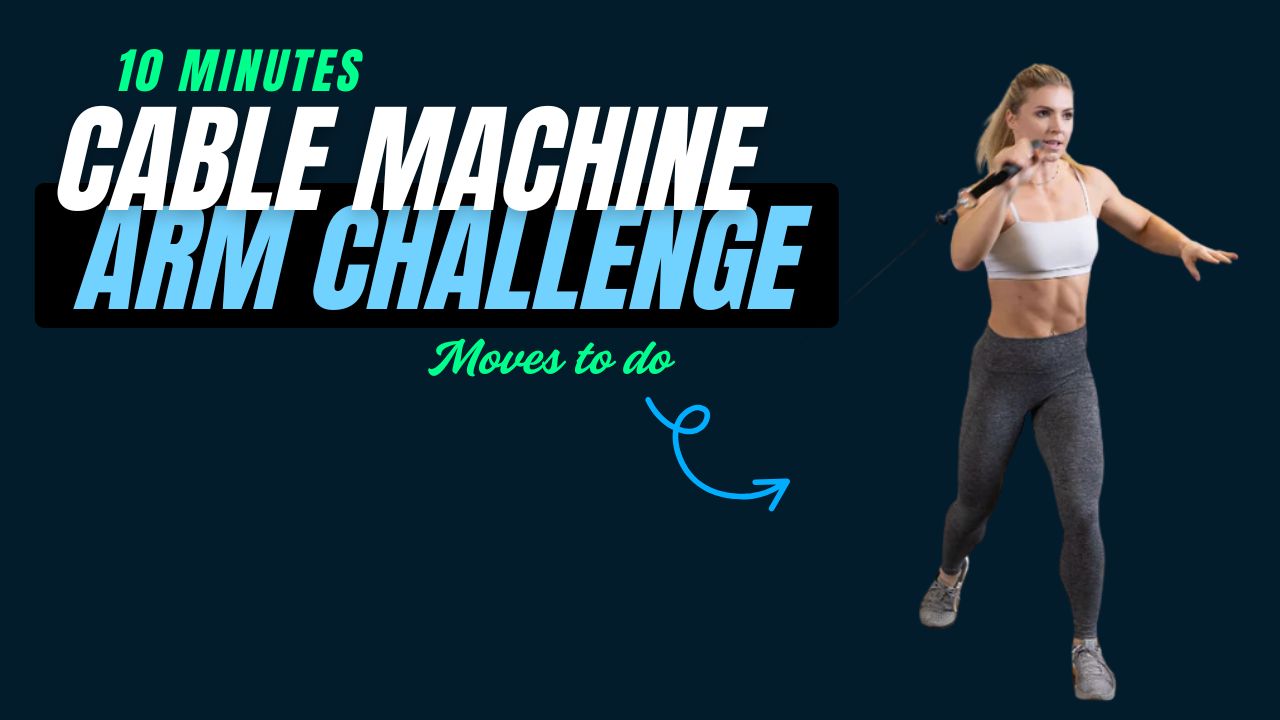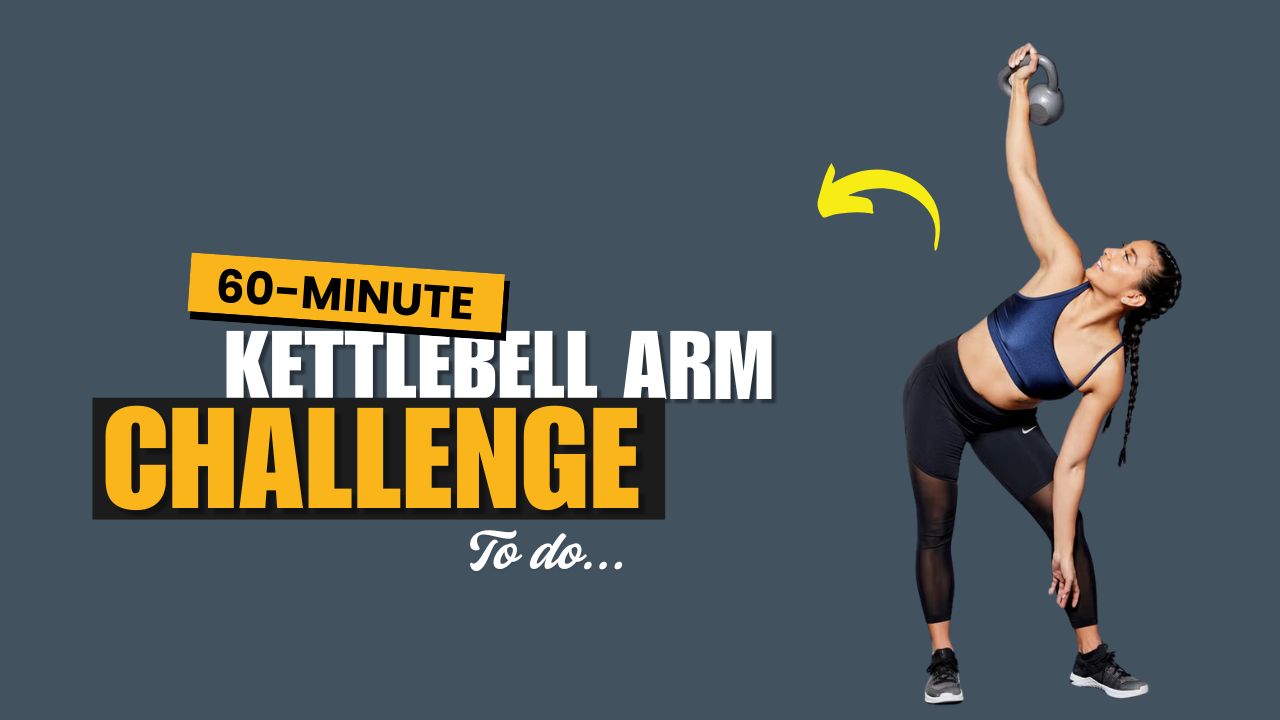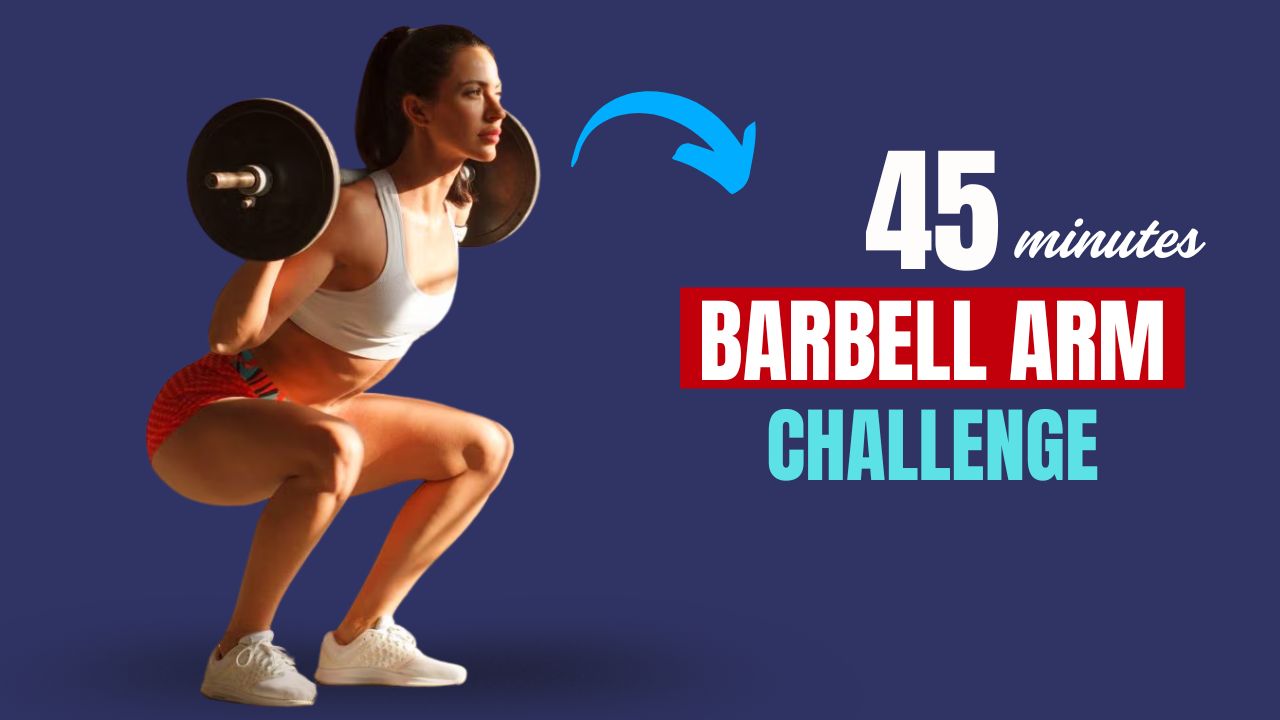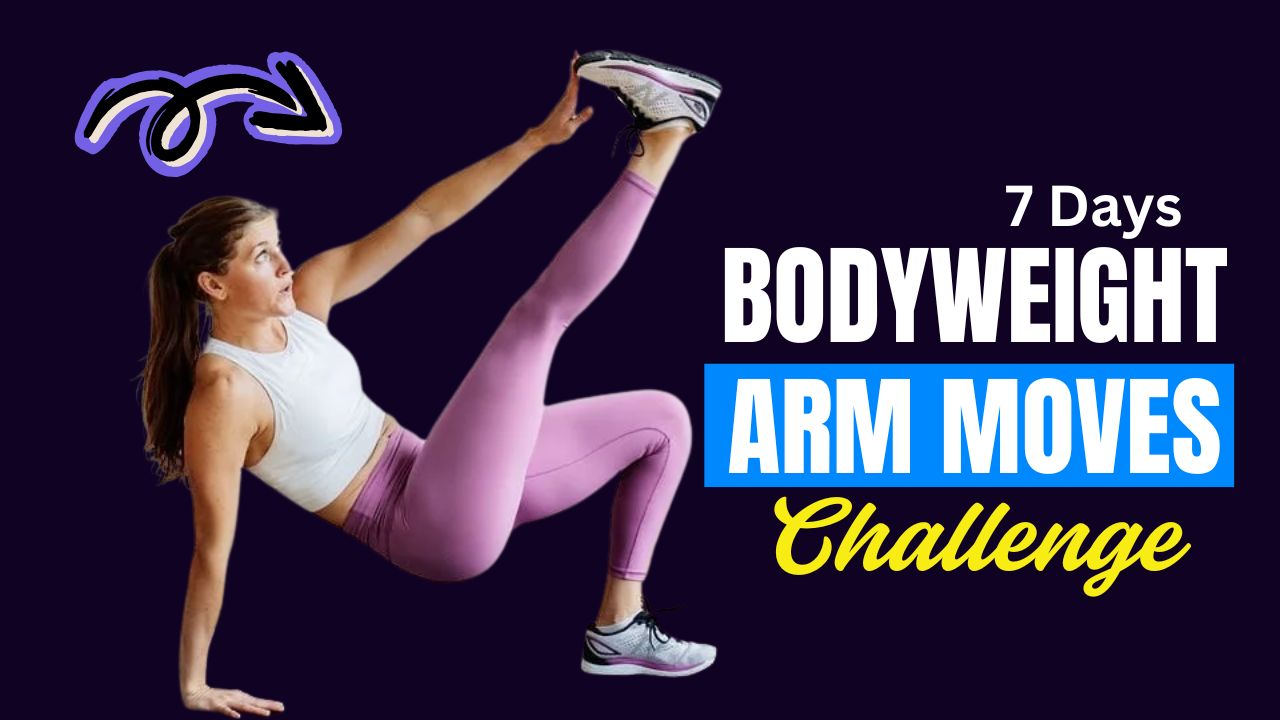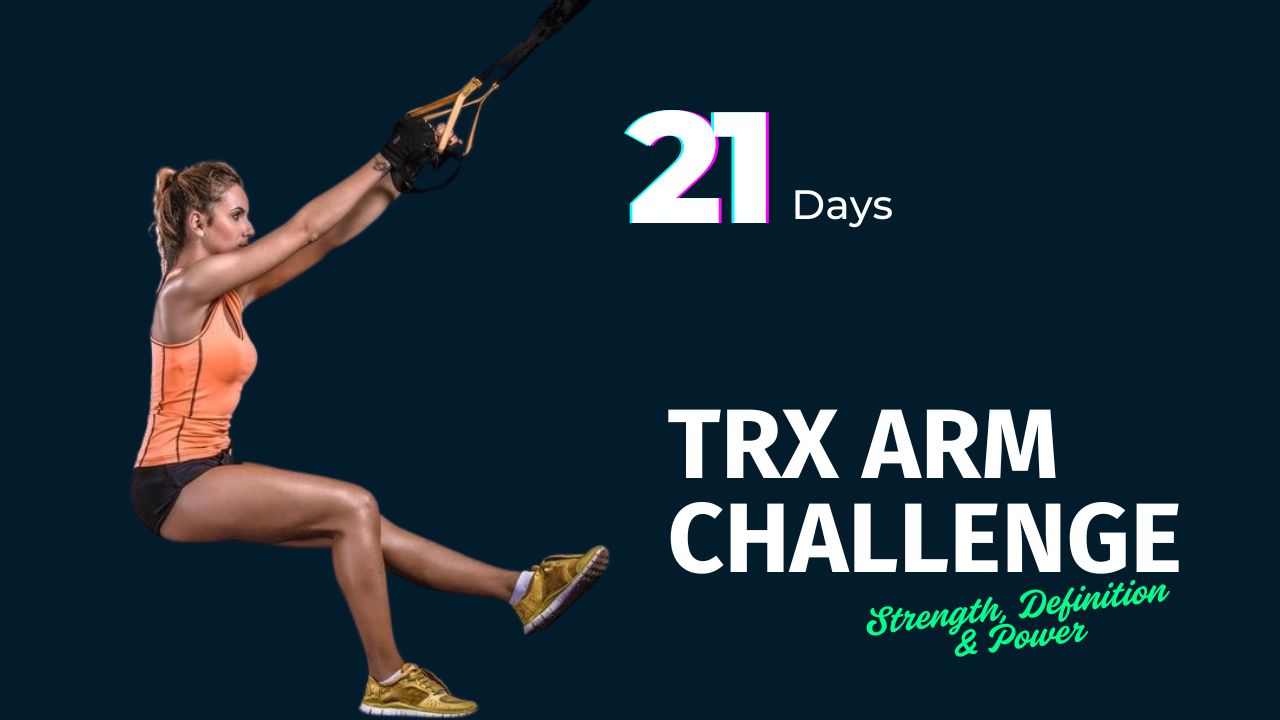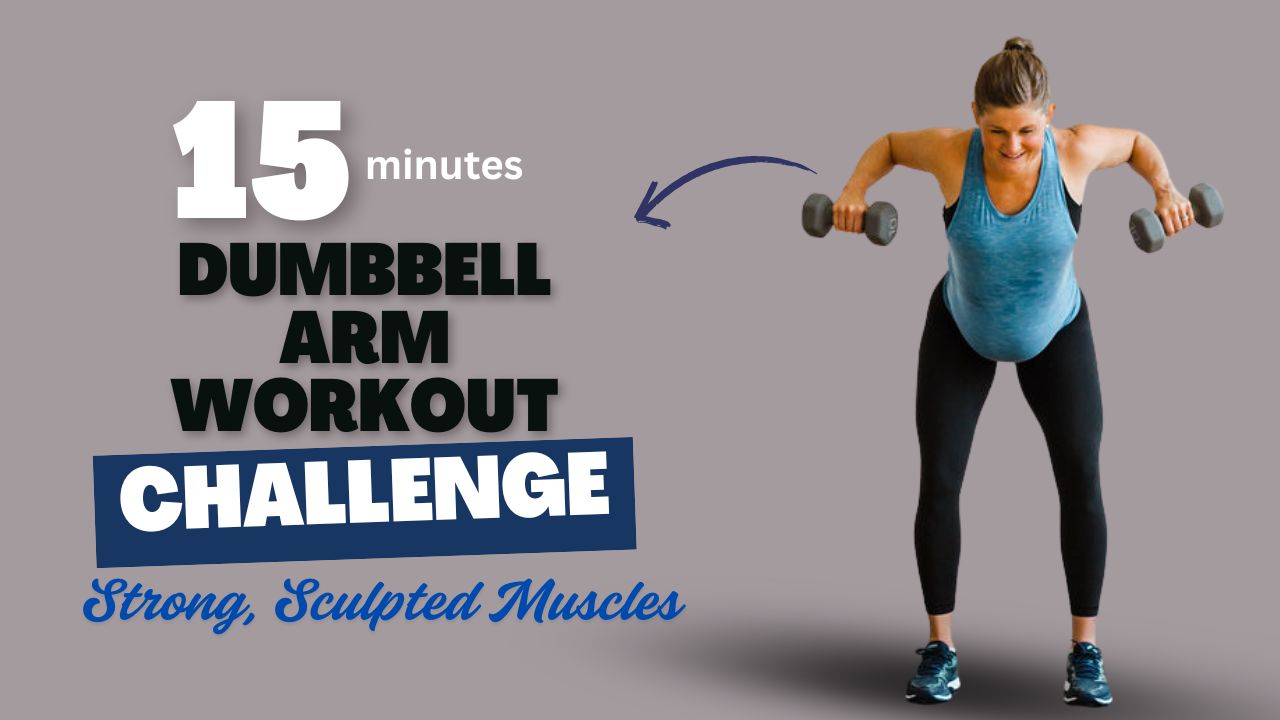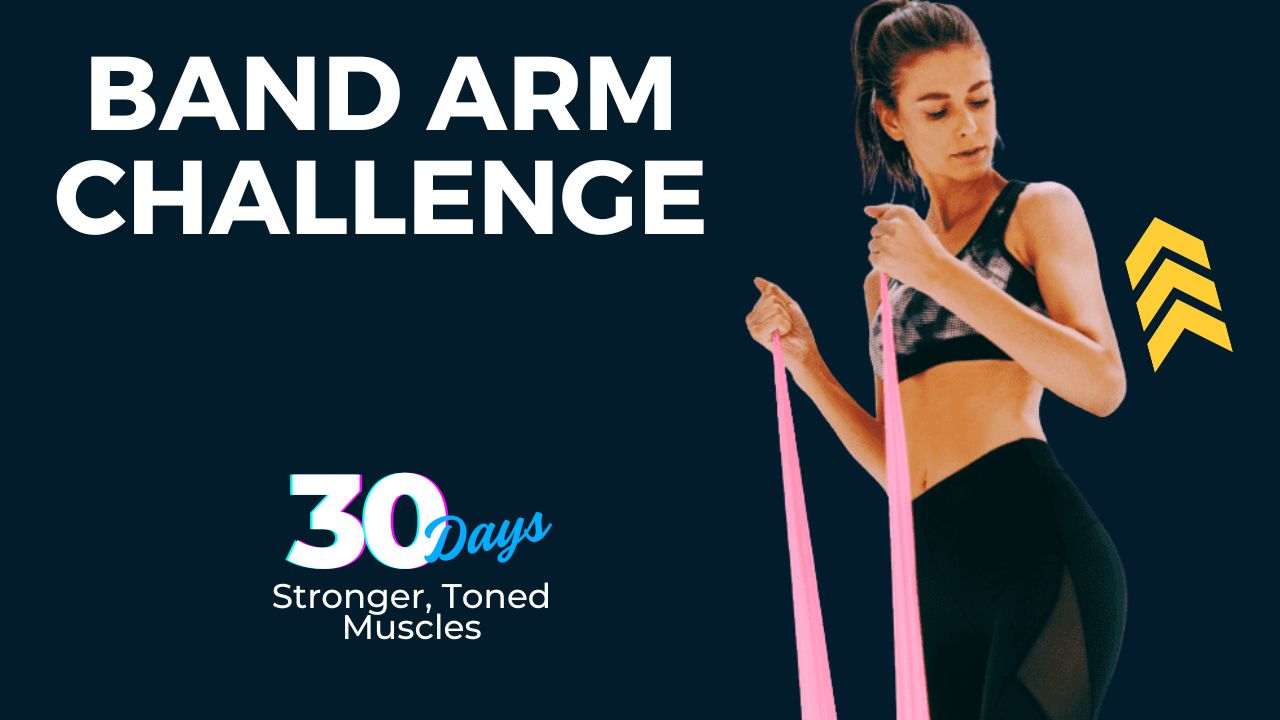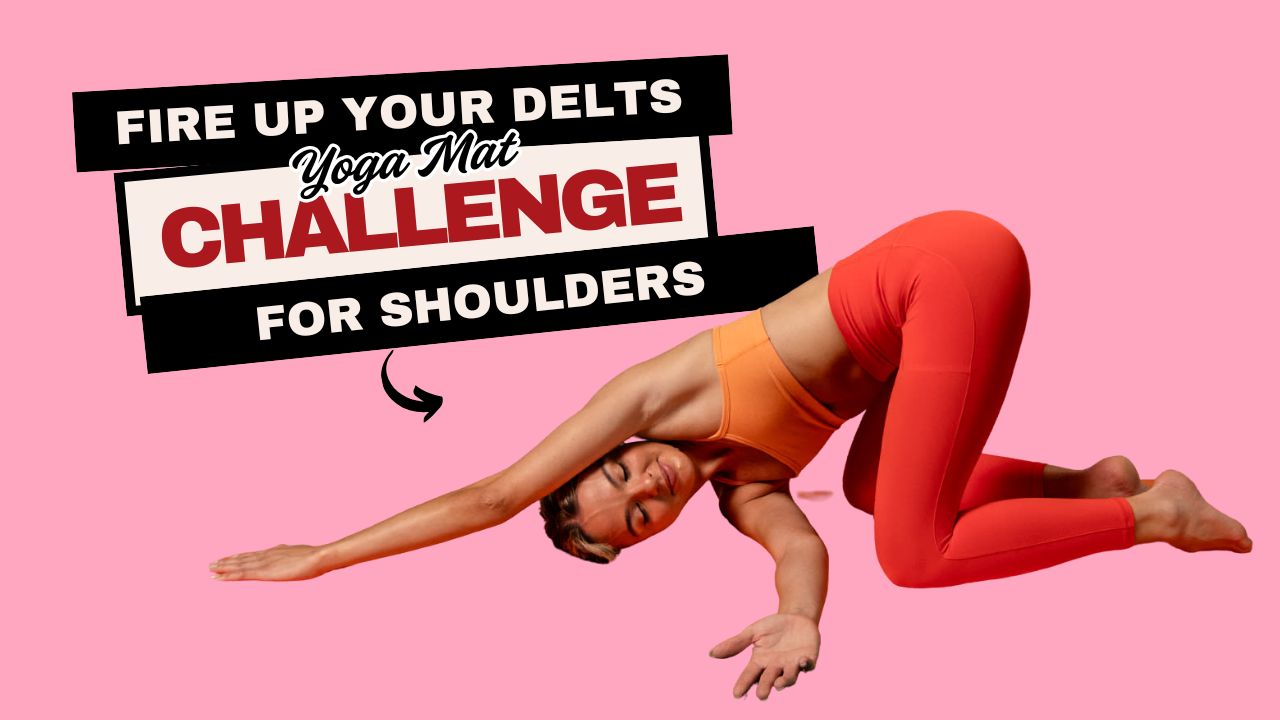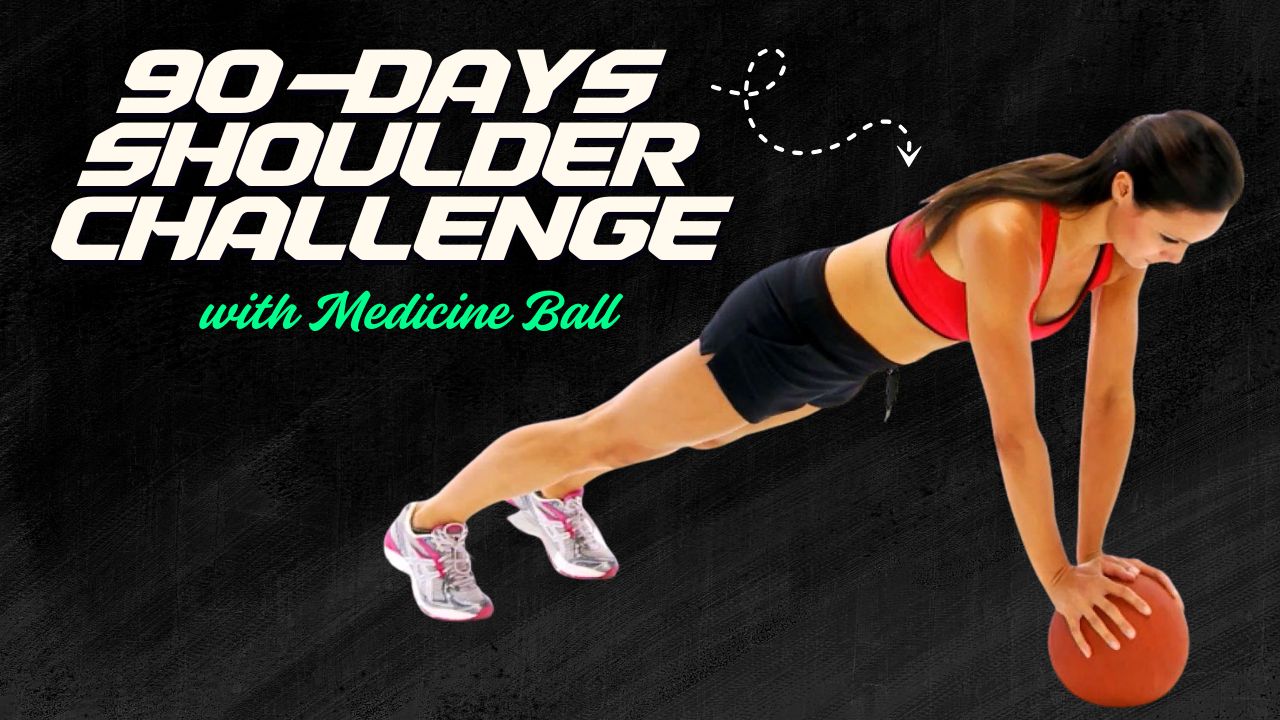Want to sculpt that superhero V-taper back? Here’s a secret: it doesn’t take endless rows or fancy machines—just one powerful move, the lat pulldown, and its smart variations.
Whether you’re chasing wider lats, a stronger pull-up game, or better posture, mastering these 10 exercises can fast-track your progress.
Did you know?
Your lats are the largest muscles in your upper body—and they’re often the most undertrained. Lat pulldowns don’t just build size; they fix posture, boost pulling power, and even make your waist look smaller by contrast.

Table of Contents
Results After 30 Days of Lat Pulldown Exercises
| Benefit | What You Can Expect in 30 Days |
|---|---|
| Muscle Activation | Improved mind-muscle connection in lats and upper back |
| Strength Gains | Noticeable increase in pulling strength and endurance |
| Muscle Definition | Slight visual improvement in back shape, especially upper and outer lats |
| Posture Improvement | Reduced slouching; shoulders naturally pulled back more |
| Grip Strength | Stronger grip from consistent pulling under tension |
| Better Pull-Up Performance | Easier progression to assisted or full pull-ups |
| Joint Support | Enhanced shoulder stability and reduced stiffness |
| Workout Confidence | Greater control, form precision, and comfort in upper-body workouts |
| Fat Burn (if paired with cardio) | Slight fat reduction in the upper back area due to improved muscle activity |
| Routine Discipline | Consistency builds habit—leads to long-term transformation potential |
Also Read: 10 Barbell Oblique Exercises That Carve Your Waist Like a Pro
Do’s and Don’ts of Pulldown Exercises
| Do’s ✅ | Don’ts ❌ |
|---|---|
| Use a full range of motion (full stretch and full squeeze). | Don’t use momentum or swing your torso back to lift heavier. |
| Keep your chest up and shoulder blades pulled back during the movement. | Don’t let your shoulders roll forward or hunch. |
| Pull the bar to the top of your chest, not behind your neck (unless advanced). | Don’t pull the bar behind your head if you lack shoulder mobility. |
| Control the weight on both the pull and release (eccentric) phases. | Don’t let the weight stack slam down. |
| Focus on leading with your elbows, not your hands. | Don’t pull primarily with your biceps—target your lats. |
| Use different grips and variations to hit your back from all angles. | Don’t stick to only one version or grip style forever. |
| Warm up your shoulders and upper back before heavy sets. | Don’t jump straight into heavy weights without warming up. |
| Sit upright with your core engaged throughout the exercise. | Don’t arch your lower back or lean excessively. |
| Start with moderate weight and increase gradually with good form. | Don’t ego lift—it increases injury risk and reduces effectiveness. |
| Include lat pulldowns in a well-rounded back or upper-body routine. | Don’t rely on lat pulldowns alone for total back development. |
Why Lat Pulldown Variations Matter
Lat pulldowns primarily target the latissimus dorsi, but with different grip positions, angles, and attachments, you can activate the lats from multiple directions. This leads to:
- Faster hypertrophy (muscle growth)
- Balanced upper-body strength
- Improved performance in pull-ups and deadlifts
- Better shoulder joint support
1. Traditional Wide-Grip Lat Pulldown
Primary Target: Outer lats
How to Do It:
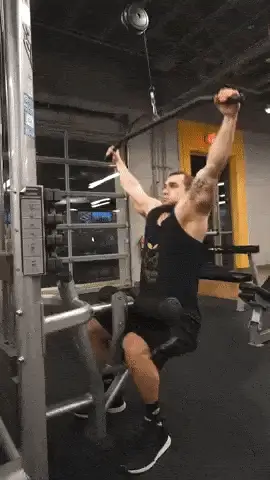
- Sit on the machine with your thighs secured under the pads.
- Grip the bar wider than shoulder-width.
- Pull the bar down toward your chest while squeezing your shoulder blades together.
- Pause at the bottom, then slowly return.
Benefits:
Builds a wide back and mimics the pull-up movement, great for beginners and pros alike.
Also Read: 13 Barbell Bicep Workouts to Add Size, Power & Peak
2. Close-Grip Lat Pulldown
Primary Target: Lower lats and biceps
How to Do It:

- Use a V-bar or narrow-grip handle.
- Keep elbows close to your body as you pull the bar to your upper chest.
- Slowly release to full stretch.
Benefits:
Improves thickness and depth in the lats while engaging more biceps.
3. Reverse-Grip Lat Pulldown
Primary Target: Lower lats, biceps, forearms
How to Do It:
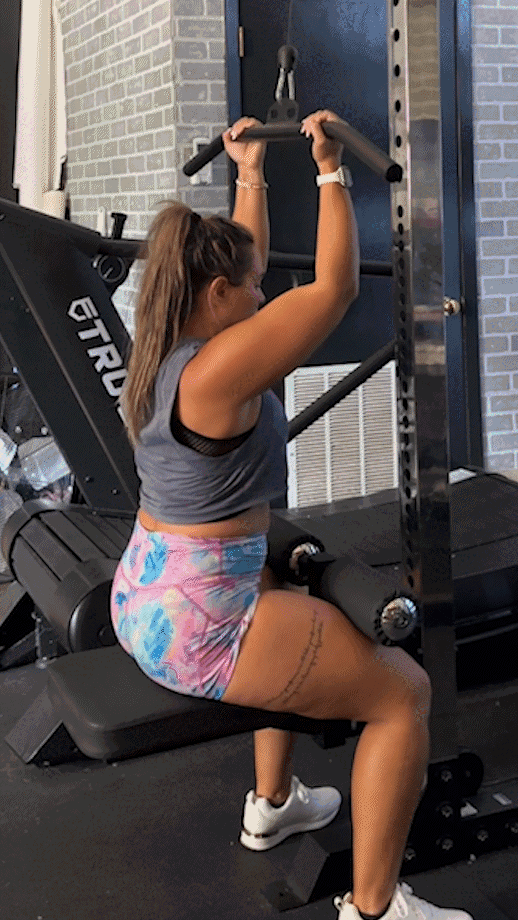
- Use an underhand (supinated) grip, shoulder-width apart.
- Pull the bar down to your upper chest, keeping your chest lifted.
- Control the upward motion.
Benefits:
Provides a deeper stretch and targets the often-neglected lower lats.
4. Single-Arm Lat Pulldown (Cable or Machine)
Primary Target: Unilateral lat activation
How to Do It:
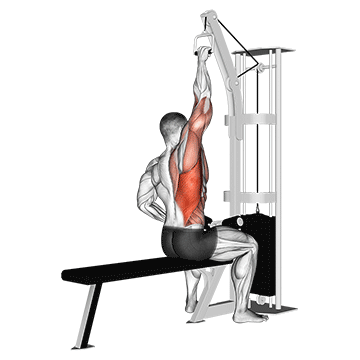
- Attach a single handle to the cable.
- Sit upright, keeping your torso still.
- Pull with one arm, leading with the elbow.
- Focus on lat contraction at the bottom.
Benefits:
Corrects muscle imbalances and enhances mind-muscle connection.
Also Read: Sculpt a Bigger Chest: 12 Barbell Exercises for Explosive Growth
5. Behind-the-Neck Lat Pulldown (Advanced Only)
Primary Target: Upper lats, traps, rhomboids
How to Do It:
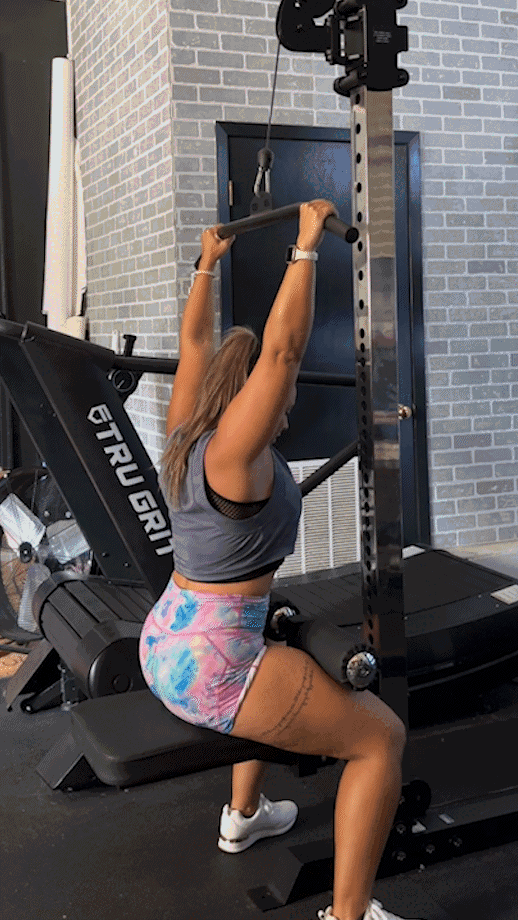
- Grip the bar wide and pull it behind your head.
- Avoid leaning too far forward or jerking the movement.
- Return the bar with control.
Caution:
Not recommended if you have shoulder mobility issues. Always warm up first.
Benefits:
Isolates upper back muscles from a unique angle.
6. Lat Pulldown with Resistance Band Assist
Primary Target: Beginner-friendly lat activation
How to Do It:
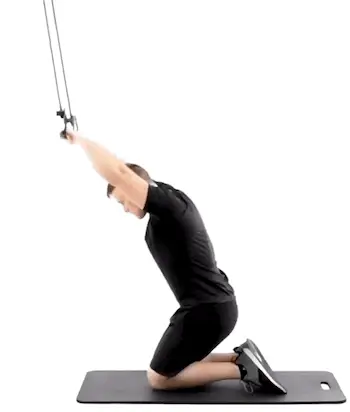
- Loop a resistance band around a stable pull-up bar.
- Kneel or sit and pull the band down like a cable pulldown.
- Squeeze at the bottom and control on the way up.
Benefits:
Great for at-home workouts or warm-ups; improves neuromuscular control.
7. Straight-Arm Pulldown (Lat Isolation)
Primary Target: Latissimus dorsi (especially mid-lats)
How to Do It:
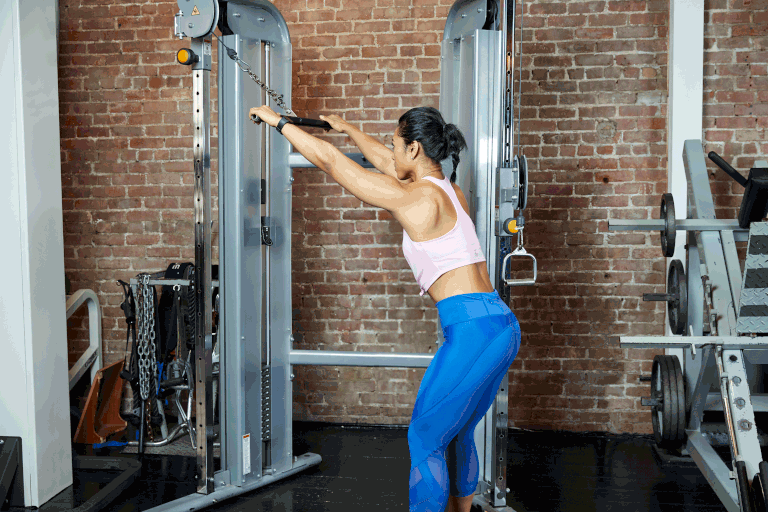
- Use a straight bar attached to a high cable.
- Keep arms straight and pull the bar down in an arc to your thighs.
- Maintain a slight bend in the elbows, chest out.
Benefits:
Removes assistance from biceps, maximizing lat engagement.
Also Read: 13 Best Dumbbell Hamstring Exercises for Stronger, Leaner Legs
8. Kneeling Lat Pulldown
Primary Target: Core + lats
How to Do It:
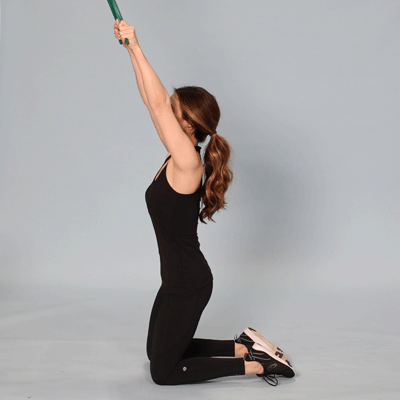
- Kneel in front of the lat pulldown machine.
- Use a bar or rope attachment.
- Pull down while maintaining posture and core tension.
Benefits:
Engages your core more actively, improves posture, and promotes stability.
9. Neutral-Grip Pulldown (Hammer Grip)
Primary Target: Mid and lower lats, shoulders
How to Do It:

- Use neutral-grip handles.
- Pull the handles down toward your upper chest.
- Keep your elbows close to your body.
Benefits:
Safer on the shoulders, ideal for beginners or those rehabbing injuries.
10. Iso-Hold Lat Pulldown
Primary Target: End-range lat contraction
How to Do It:
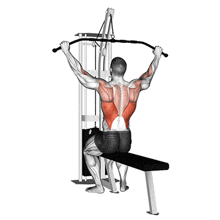
- Do any standard pulldown movement.
- Hold the bottom position (bar at chest) for 2–5 seconds per rep.
- Keep your muscles engaged throughout the hold.
Benefits:
Increases time-under-tension, builds endurance, and deepens lat control.
Also Read: 12 Oblique-Toning Dumbbell Exercises That Carve Your Side Abs Fast
Myth Buster!
“Lat pulldowns are only for beginners.”
False! Even elite athletes use pulldown variations to refine their form, add volume safely, and pre-exhaust the lats for heavier lifts.
Tips for Maximum Results
- Use full range of motion (don’t short-change the stretch or squeeze).
- Keep reps slow and controlled, especially on the eccentric (release) phase.
- Avoid leaning back excessively—it turns it into a row.
- Switch up grip and angle every few weeks to challenge your muscles differently.
Conclusion
Lat pulldowns aren’t just a backup for people who can’t do pull-ups—they’re a goldmine of back development when used right.
These 10 variations offer a roadmap to a broader, thicker, and more powerful back, fast. Whether you’re lifting at the gym or setting up resistance at home, there’s a pulldown exercise that fits your goals.
Frequently Asked Questions (FAQs)
How many sets and reps should I do for lat pulldown exercises?
For muscle growth (hypertrophy), aim for 3–4 sets of 8–12 reps. For strength, go slightly heavier with 4–5 sets of 5–8 reps. Focus on form and full range of motion.
Are lat pulldowns as effective as pull-ups?
Both exercises target the same muscles, but in different ways. Lat pulldowns are excellent for beginners and controlled strength building. Pull-ups use your bodyweight and recruit more stabilizing muscles. They complement each other well.
Can I do lat pulldowns at home without a machine?
Yes! Use resistance bands anchored to a door or bar for a home-friendly variation. The motion is similar and can be scaled for intensity.
Which grip is best for wider lats?
A wide overhand grip (palms facing away) emphasizes the outer portion of the lats, helping to create a broader V-shaped back.
Why do I feel lat pulldowns more in my arms than my back?
This usually happens if you’re using your biceps too much. Focus on pulling with your elbows and squeeze your shoulder blades at the bottom. Lighten the weight if needed to feel the mind-muscle connection.
How often should I do lat pulldowns per week?
You can train your back 2 times per week with at least 48 hours of rest between sessions. Rotate through different variations to hit all angles of your lats.
Can women benefit from lat pulldown exercises?
Absolutely! Lat pulldowns improve posture, upper-body strength, and create a toned, athletic shape. They’re safe and effective for all genders.
Are behind-the-neck lat pulldowns safe?
Only if you have excellent shoulder mobility and experience. Most people are better off sticking to front-of-the-neck variations to avoid joint strain.
Do lat pulldowns help with posture?
Yes. Strengthening the lats and upper back pulls the shoulders back, which helps correct slouching and promotes better posture.
What other muscles do lat pulldowns work?
Besides the latissimus dorsi, they also activate the biceps, trapezius, rhomboids, rear delts, and core muscles, depending on the variation used.
